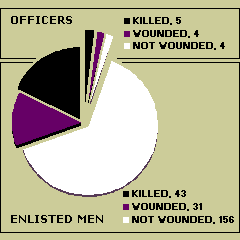
U.S.S. LANSDOWNE (DD486)
October 14, 1942
From: The Division Commander, and Captain, and Officers of U.S.S. LANSDOWNE.
To: The Captain, Officers and Men of U.S.S. DUNCAN.
Dear Ted:
The contribution of $575 which accompanies this letter, is from our Division Commander and the Officers and Men of the U.S.S. LANSDOWNE, who feel a great sense of personal loss. We hope this may come in handy for the small items you will all want right away. It is given from deep in our hearts to our close friends of your ship.
The Friendly rivalry and keen competition between our ships was the finest I have ever seen. Our Officers and men took great pride in your fine ship, praising her qualities to all outsiders; feeling that no one but ourselves had the privilege of making disparaging remarks about our sister ship, alongside which we were built, whose Officers and men were always ready and eager to lend a helping hand, and in whose wake we followed many times with complete confidence.
We found your ship setting mark after mark for us to shoot at and very often having just enough of an edge on us to spur us on to additional effort to make you as proud of your sister ship as we were, and always will be, of ours.
And it will ever be a source of pride to us in this Division that you went out as you did; the way a ship should go; aggressively into the enemy with all you had and mortally wounding an enemy ship several times your size.
We had very anxious hours between the announcement of your disappearance and the report of the rescue of such a good proportion of your shipmates, but that news gave a lift to everyone of us and we want you and your Officers and men to know how proud we are of you and that your ship will be close to us in whatever action may be ahead. We shall feel her strong support and never-failing cooperation in every crisis.
Every Officer and man joins me in sincerest best wishes to everyone of you.
W. R. SMEDBERG III,
Lieutenant Commander, U.S. Navy,
Commanding
Source: The “Lucky L,” USS Lansdowne.
For the remaining weeks until she was lost, she was often in company of Laffey and Lansdowne. On 15 September 1942, the three destroyers were escorting Wasp (CV 7), when she was torpedoed by Japanese submarine I-19. (Shortly afterward, a few miles distant, O’Brien was hit by a torpedo from the same spread or from sister submarine I-15, intended for nearby Hornet (CV 8). When it became apparent that Wasp could not be saved, the three DDs and cruisers Helena and Salt Lake City rescued 1,946 carrier sailors.
Thereafter, Duncan escorted carriers and transports reinforcing Guadalcanal, then rejoined her squadron attached to Rear Admiral Norman Scott’s Task Group 64.2.
Approaching midnight on 11 October, she was second in line behind Farenholt (flagship) followed by Laffey, cruisers San Francisco, Boise, Salt Lake City and Helena, and rear destroyers Buchanan and McCalla, which found themselves “crossing the ‘T’” of three approaching Japanese cruisers and two destroyers, intent on bombarding Marine positions on Guadalcanal.
The resulting Battle of Cape Esperance began with the American force reversing course. During this maneuver, Duncan made radar contact with and mistakenly closed the enemy rather than following Farenholt’s complete turn. Her solo run brought her to within a mile of heavy cruiser Furutaka, which she took under torpedo and gunfire, and which later sank.
Duncan’s casualties at the Battle of Cape Esperance.

Source: Bureau of Personnel casualty report, NARA.
Hit first by friendly fire in her forward fireroom and thereafter unable to escape further damage, however, Duncan began to burn. Eventually her power failed, thwarting damage control efforts. Arriving too late to save her, McCalla picked up 195 survivors as Duncan sank about six miles north Savo Island at noon on the 12th.
Duncan earned one service star for the Battle of Cape Esperance.
Survivors were reassigned. Commander Taylor took command of Bennett (DD 473), commissioned the following February, with several Duncan and O’Brien shipmates in the crew; XO LCdr. Louis Bryan took command of Shubrick (DD 639) with other Duncan survivors.
A third USS Duncan, Gearing-class DD 874, was built by Consolidated Steel at Orange, Texas and commissioned there 15 February 1945.
Sources: Naval Historical Center Photographic Section; Office of Naval Records and Ships' Histories Section, Navy Department; Roscoe; http://members.aol.com/LilHoke/USSDuncan.html.